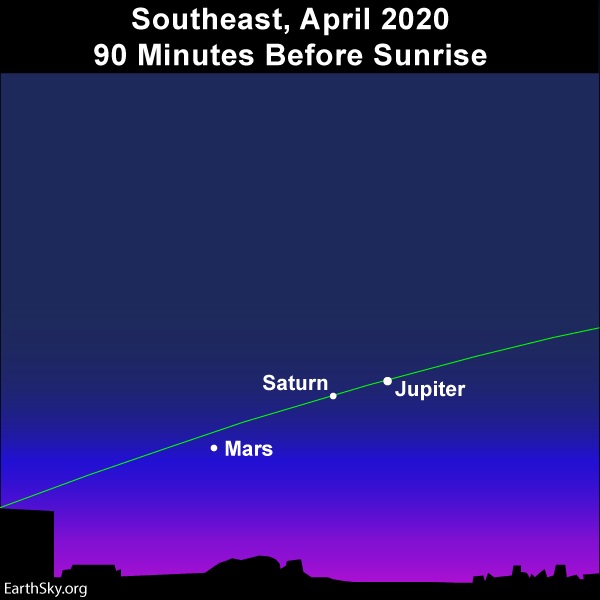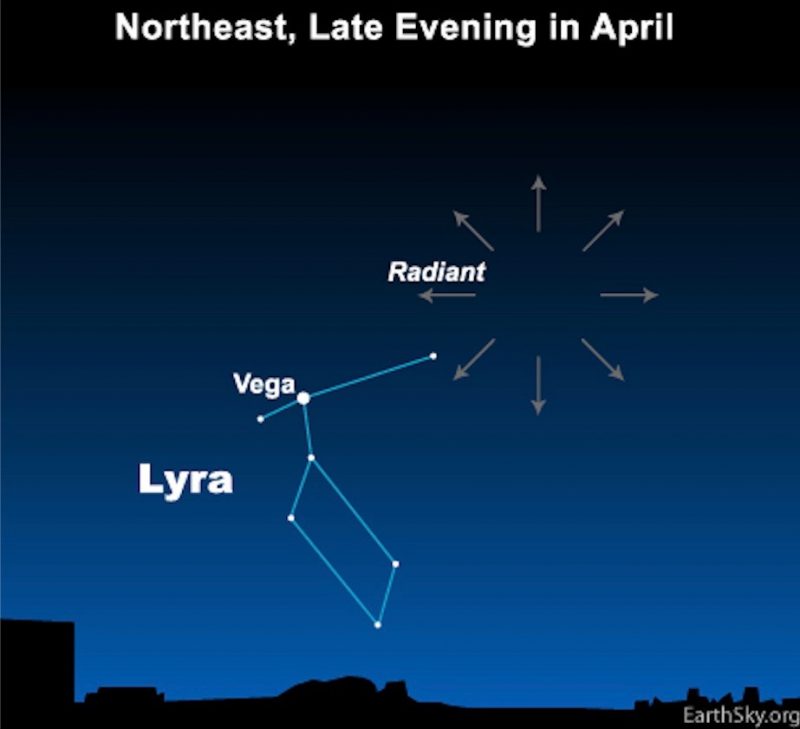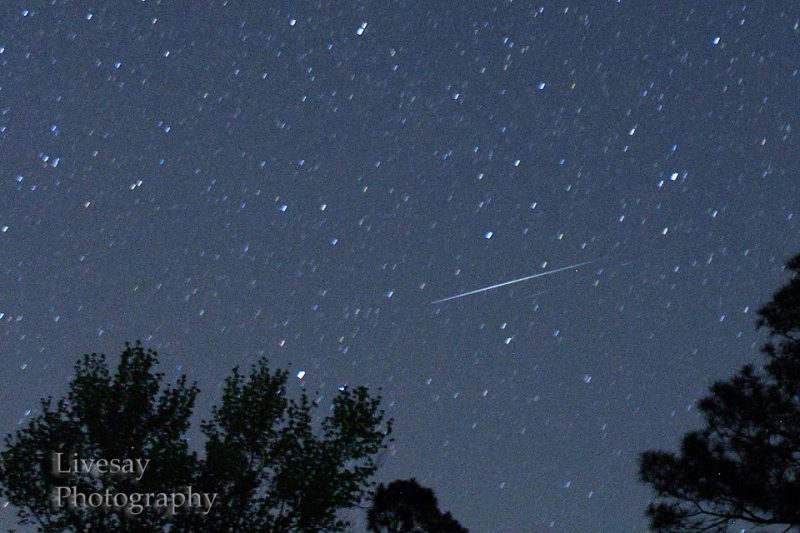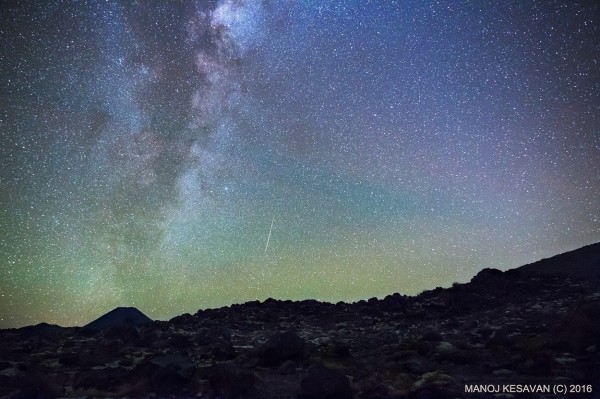Above: Simon Lee Waldrum caught a Lyrid meteor during 2017’s shower. Gorgeous!
It’s Lyrid meteor time again! The Lyrids aren’t the richest shower of the year. In a dark sky, you might see about 10 to 15 meteors per hour at the shower’s peak. But the Lyrids are always welcome, a break from the “meteor drought” that always comes in the early part of every year. In 2020, the skinny and almost-new moon won’t hinder the view. Bring on the Lyrids!
We expect Lyrid meteors to be flying early this week, beginning late at night around Sunday, April 19, 2020, probably peaking in the predawn hours on Wednesday, April 22. The follow morning (April 23) might be good too, if you’re game. Generally, the greatest number of meteors fall in the few hours before dawn. That’s when the radiant point – near the star Vega in the constellation Lyra – is highest in the sky, and when you’re likely to see the most meteors. Read more about the Lyrid’s radiant point.
Note for Southern Hemisphere observers: Because this shower’s radiant point is so far north on the sky’s dome, the star Vega rises only in the hours before dawn. Thus the radiant will be lower in the sky for you than for us farther north on Earth’s globe, when dawn breaks. That’s why you’ll see fewer Lyrid meteors. Still, you might see some! Try watching before morning dawn on April 20, 21, 22 and even 23.
Good news for all of us this year: The moon turns new less than one day after the expected peak, leaving the night sky dark for meteor-watching.
More good news: There are three planets up before dawn this week, Jupiter, Saturn and Mars! They make a little arc on the ecliptic – pathway of the sun and moon across your sky – with Jupiter by far the brightest planet of the three. Enjoy them while watching for meteors. See the chart below:

The Lyrids aren’t an altogether predictable shower. In rare instances, they can bombard the sky with some 60 to 100 meteors per hour. We’re not expecting a Lyrid meteor outburst this year, but you never know. And, of course, catching even a few meteors before dawn counts as a thrill.
Plus the Lyrids sometimes produce fireballs, or exceptionally bright meteors.
Why watch for meteors before dawn? Although there are exceptions, most meteor showers are best in the hours after midnight. The key is the shower’s radiant point, in this case in the approximate direction of the bright star Vega. This star rises over the northeast horizon by around mid-evening (9 to 10 p.m. local time) at mid-northern latitudes. South of the equator, this star rises later, in the hours before dawn. The higher that Vega appears in your sky, the more Lyrid meteors you’re likely to see. Since this brilliant beauty of a star soars to its highest point at or near dawn, the best viewing of this shower is usually around then.
Visit the U.S. Naval Observatory to find out when Vega rises into your sky.
Remember, though … you don’t have identify the meteor shower radiant point to enjoy the Lyrid meteors. The meteors radiate from a single point, but they can be seen flying in all parts of the night sky.

Like most meteors in annual showers, Lyrid meteors are the debris of a comet orbiting the sun. They burn up in the atmosphere about 60 miles (100 km) up. Vega, meanwhile, isn’t really connected with the meteors. It lies trillions of times farther away at 25 light-years.
If you want to watch the shower, be sure to find a place away from artificial lights. Simply recline comfortably while looking in a relaxed way in all parts of the sky.
Want more? Try these links:
Everything you need to know: Lyrid meteor shower
Top ten tips for meteor watchers
EarthSky’s meteor shower guide for 2020


Bottom line: The Lyrid meteor shower offers 10 to 15 (or so) meteors per hour at its peak on a moonless night. There will be little to no moon to spoil the show in 2020. We expect the shower to pick up beginning late at night on Sunday, April 19, 2020, probably peaking in the predawn hours on Wednesday, April 22. The follow morning (April 23) might be good too, if you’re game.
EarthSky astronomy kits are perfect for beginners. Order today from the EarthSky store











